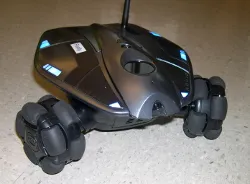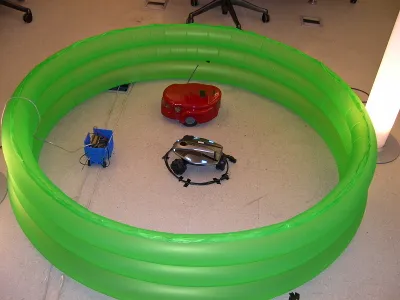Category-Based Intrinsic Motivation

Category-Based Intrinsic Motivation
Ryan Walker and Lisa Meeden
Professor Meeden had previously spent time researching self-motivated, curious, simulated robots. The goal for this summer was to adapt this research to work on a robot in the real world. Defining and producing robotic curiosity is an important goal in developmental robotics, and demonstrating a functional system in the real world is an important step in furthering this research.
Ryan helped Rachel Lee and Professor Meeden design and implement a task well-suited to testing the learning algorithm. Ryan coded an interface allowing the group to use Rovio robots for the experiment, allowing for further research or classroom work with these inexpensive robots. The group created an environment with varied visual stimuli to encourage and document categorization and curiosity. Using a unique approach to curiosity derived from current research, the group ran experiments designed to show the robot's capacity to learn and predict the behavior of objects in its environment.
Ryan helped to manage the experiments by preparing and monitoring the robots, code, and environment. The group collected and analyzed the findings, writing an eight page paper that was submitted to the 2009 Epigenetic Robotics conference. The results were promising, demonstrating interesting behavior and logical categorization of the world. The robot focused on challenging features of the world significantly more than the easily predictable 'boring' aspects. While the results were not as clean as those from simulation, implementing such a system on a real robot has proven that the system we designed has potential for further research and refinement.




